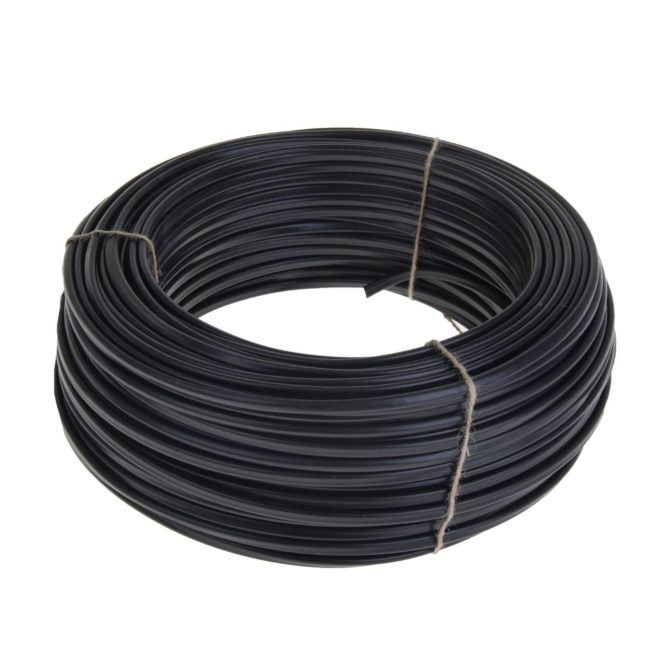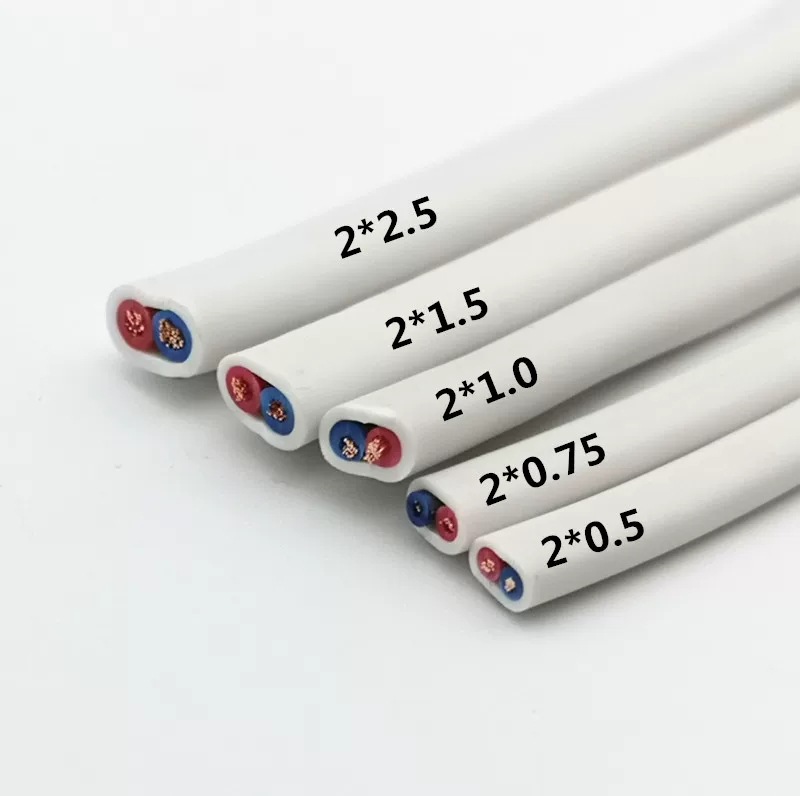The technical characteristics and cost-effectiveness of VVG wire allow it to compete not only with domestic counterparts, but also with foreign counterparts. Given the number of varieties of this cable on the market, its scope is practically unlimited. The main thing is to choose the right part.
Scope of application
VVG wire is suitable for domestic and industrial circuits with voltages up to 1000 volts. Most often, this wire is recommended for domestic wiring when using concealed and open installation methods and installation behind plasterboard floors.
One limitation of using VVG cable is laying it underground, because the soft outer insulation will not protect the wire from rodents or possible mechanical damage due to soil displacement. If it is necessary to use it for laying underground utilities, the cable should be laid in a pipe or other rigid insulating material.
Fire safety markings
VVG cable installation A complete description of the cable characteristics can be drawn by the main and additional markings. On the VVG cable, the decoding starts with whether there is the letter “A” at the beginning.
If it is not present, the cable is copper, otherwise it is aluminum. The letter “B” indicates the insulation material: on the conductor and on the outside – in both cases, polyvinyl chloride is used.
The last letter “G” indicates the absence of an external armor coating – such cables with a soft sheath are considered bare. The letter “p”, if it is located after the letters VVG, indicates that the cable is flat – the wires in it are laid out in a row, not twisted together.
In addition, there are the designations “T” and “UHL”, which indicate tropical properties of the insulation or are designed for temperate and cold climates.
In addition to the main letters in the cable marking, there may be additional letters indicating that the fire resistance of the insulation differs from the standard.
ng – indicates that in the case of laying wires in a cable channel, one of the wires is significantly overheated, the insulation will not catch fire, but will only smolder, protecting the adjacent wires from ignition;
ng-ls – during smoldering the insulation will reduce the emission of smoke and carbon monoxide into the air;
ng-hf – even if the insulation catches fire, a minimum amount of harmful resins and gases will be released into the air, which will have a corrosive effect;
If the prefix “fr” is added to the above designations, it indicates the fire resistance of the insulation, which is achieved by using windings containing mica.
Wires can be numbered or color-coded, the manufacturer uses a solid color for the core and a partial color when only part of the insulation is colored, usually in strips of 1 mm wide. If there are two conducting cores, then their colors necessarily include a blue neutral, and if there are three or more, then the ground is yellow-green.
Marking of the number, position and shape of the cores
After the letter designation, the cable marking contains numbers showing the number of current-carrying conductors and their number, for example – 3 x 25 means that there are 3 separate conductors in the cable, each with a cross-section of 25 square millimeters.
Four-core cables have their own peculiarities – some of their varieties are made with one core of reduced cross-section. This is because the neutral or earth conductor does not always need the same cross-section as the phase conductors, and with the reduction when installing large networks, the savings become significant. Therefore, the use of smaller conductors is reflected in the marking. If a standard four-core cable is specified as 4 x 2.5 mm², then the marking with one reduced diameter will look like 3 x 2.5 + 1 x 1.5. This indicates the presence of three 2.5 mm² conductors and one 1.5 mm² conductor in the cable.
The next characteristic shown in the marking is the use of single-wire or stranded conductors in the cable, the use of the designation “O” – rigid wire or “M” – flexible wire. Their shape is also indicated, which can be round or sector-shaped – “K” or “C”, respectively.
The complete marking looks like VVG 3 x 2.5 ms + 1 x 1.5 ms (N) – 0.66 TU – how to decipher, in the table in the figure:
VVG cable marking decoded
If conductors of equal cross-section with an area of less than 16 square millimeters are used, it is not necessary to use markings indicating single or stranded conductors and their shape
Specifications
Where and how you can use a cable of a certain brand to show its technical characteristics. There are several varieties of VVG wires, the most commonly used of which is the VVGng cable, the technical characteristics of which are suitable for single and stacked.
The maximum voltage is 660-1000 volts, depending on the insulation grade.
The recommended operating temperature is -50 to +50 C°.
Use at air humidity of up to 98% is permitted.
The temperature that the insulation material can withstand for a long time without changing its characteristics is 70°C. For a short time, it can withstand heating up to 90°C and for about 4 seconds – up to 250°C. The insulation ignites at a temperature of + 400 and above.
Emergency operation is allowed for 8 hours per day, but must not exceed a thousand hours over the entire service life of the wire.
The radius of bends allowed during installation depends on the type of core wire – solid or multi-core. In the first case, the bend will be the total cable diameter * 10, in the second – diameter * 7.5.
The number of wires in the coil depends on the cross-section of the core. Up to 16 mm² - 450 m, from 25 to 70 mm² - 300 m, all others – 200 m.
The expected service life of the wire is 30 years, with a warranty of 5 years.
The data above show what a VVGng cable is and where it can be used.
What to look out for when choosing
Despite the complexity of fake cables, it is still possible to encounter low-quality products where the insulation does not meet the standards or the conductor cross-section is smaller than indicated on the marking. To check the insulation, it is enough to see if there are streaks – on a good wire there will be a clean, even cut with insulation of the core that fits tightly.
To check the cross section, you can use a micrometer or the “old-fashioned” method, folding the vein into 10 layers and measuring it with a ruler. For the rest, you need to focus on the calculated indicators and select the desired section of the cable.
Post time: Sep-09-2024








